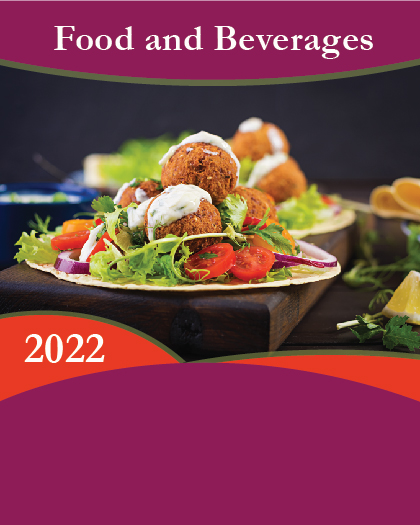Chapter 1. Executive Summary
1.1. Market Snapshot
1.2. Global & Segmental Market Estimates & Forecasts, 2018-2026 (USD Billion)
1.2.1. Food Encapsulation Market, by Region, 2018-2026 (USD Billion)
1.2.2. Food Encapsulation Market, by Core Phase, 2018-2026 (USD Billion)
1.2.3. Food Encapsulation Market, by Shell Material, 2018-2026 (USD Billion)
1.2.4. Food Encapsulation Market, by Technology, 2018-2026 (USD Billion)
1.3. Key Trends
1.4. Estimation Methodology
1.5. Research Assumption
Chapter 2. Global Food Encapsulation Market Definition and Scope
2.1. Objective of the Study
2.2. Market Definition & Scope
2.2.1. Scope of the Study
2.2.2. Industry Evolution
2.3. Years Considered for the Study
2.4. Currency Conversion Rates
Chapter 3. Global Food Encapsulation Market Dynamics
3.1. Food Encapsulation Market Impact Analysis (2018-2026)
3.1.1. Market Drivers
3.1.2. Market Challenges
3.1.3. Market Opportunities
Chapter 4. Global Food Encapsulation Market Industry Analysis
4.1. Porter's 5 Force Model
4.1.1. Bargaining Power of Suppliers
4.1.2. Bargaining Power of Buyers
4.1.3. Threat of New Entrants
4.1.4. Threat of Substitutes
4.1.5. Competitive Rivalry
4.1.6. Futuristic Approach to Porter's 5 Force Model (2016-2026)
4.2. PEST Analysis
4.2.1. Political
4.2.2. Economical
4.2.3. Social
4.2.4. Technological
4.3. Investment Adoption Model
4.4. Analyst Recommendation & Conclusion
Chapter 5. Global Food Encapsulation Market, by Core Phase
5.1. Market Snapshot
5.2. Global Food Encapsulation Market by Core Phase, Performance - Potential Analysis
5.3. Global Food Encapsulation Market Estimates & Forecasts by Core Phase 2016-2026 (USD Billion)
5.4. Food Encapsulation Market, Sub Segment Analysis
5.4.1. Vitamins
5.4.2. Minerals
5.4.3. Organic Acids
5.4.4. Enzymes
5.4.5. Flavors & Essence
5.4.6. Sweeteners
5.4.7. Colors
5.4.8. Preservatives
5.4.9. Essential Oils
5.4.10. Pro-biotic
5.4.11. Pre-biotic
5.4.12. Others
Chapter 6. Global Food Encapsulation Market, by Shell Material
6.1. Market Snapshot
6.2. Global Food Encapsulation Market by Shell Material, Performance - Potential Analysis
6.3. Global Food Encapsulation Market Estimates & Forecasts by Shell Material 2016-2026 (USD Billion)
6.4. Food Encapsulation Market, Sub Segment Analysis
6.4.1. Hydrocolloids
6.4.2. Melts
6.4.3. Polymers
6.4.4. Lipids
6.4.5. Others
Chapter 7. Global Food Encapsulation Market, by Technology
7.1. Market Snapshot
7.2. Global Food Encapsulation Market by Technology, Performance - Potential Analysis
7.3. Global Food Encapsulation Market Estimates & Forecasts by Technology 2016-2026 (USD Billion)
7.4. Food Encapsulation Market, Sub Segment Analysis
7.4.1. Micro encapsulation
7.4.2. Macro encapsulation
7.4.3. Nano encapsulation
7.4.4. Hybrid Technologies
Chapter 8. Global Food Encapsulation Market, Regional Analysis
8.1. Food Encapsulation Market, Regional Market Snapshot
8.2. North America Food Encapsulation Market
8.2.1. U.S. Food Encapsulation Market
8.2.1.1. Core Phase breakdown estimates & forecasts, 2016-2026
8.2.1.2. Shell Material breakdown estimates & forecasts, 2016-2026
8.2.1.3. Technology breakdown estimates & forecasts, 2016-2026
8.2.2. Canada Food Encapsulation Market
8.3. Europe Food Encapsulation Market Snapshot
8.3.1. U.K. Food Encapsulation Market
8.3.2. Germany Food Encapsulation Market
8.3.3. Rest of Europe Food Encapsulation Market
8.4. Asia-Pacific Food Encapsulation Market Snapshot
8.4.1. China Food Encapsulation Market
8.4.2. India Food Encapsulation Market
8.4.3. Japan Food Encapsulation Market
8.4.4. Rest of Asia Pacific Food Encapsulation Market
8.5. Latin America Food Encapsulation Market Snapshot
8.5.1. Brazil Food Encapsulation Market
8.5.2. Mexico Food Encapsulation Market
8.6. Rest of The World Food Encapsulation Market
Chapter 9. Competitive Intelligence
9.1. Top Market Strategies
9.2. Company Profiles
9.2.1. Royal FrieslandCampina N.V (Netherlands)
9.2.1.1. Key Information
9.2.1.2. Overview
9.2.1.3. Financial (Subject to Data Availability)
9.2.1.4. Product Summary
9.2.1.5. Recent Developments
9.2.2. Royal DSM (Netherlands)
9.2.3. Ingredion Incorporated (US)
9.2.4. Kerry Group plc (Ireland)
9.2.5. Cargill Incorporated (US)
9.2.6. LycoRed Group (Israel)
9.2.7. Balchem Corporation (US)
9.2.8. Firmenich Incorporated (Switzerland)
9.2.9. BASF SE (Germany)
9.2.10. International Flavors and Fragrances Inc. (US)
Chapter 10. Research Process
10.1. Research Process
10.1.1. Data Mining
10.1.2. Analysis
10.1.3. Market Estimation
10.1.4. Validation
10.1.5. Publishing
10.2. Research Attributes
10.3. Research Assumption























